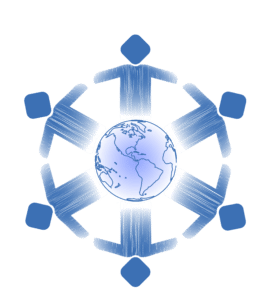At the core of Public Health lies the responsibility of securing, improving, and advocating for the health of populations, irrespective of location. Health promotion helps to preserve the functions of Public Health by supporting governments, communities, and individuals to cope with and address health challenges through building healthy public policies, creating supportive environments, and strengthening community action and personal skills. The World Health Organization emphasizes that health promotion should be focused on strengthening health promotion capacity via financing and infrastructure, promoting urban health (including healthy cities and health equity), building other healthy settings (including schools and workplaces), and developing health literacy.
The Canadian Centre on Substance Abuse (CCSA, 2019) took the stance that health promotion in the substance use field operates at a broader level than substance use prevention. It aims to strengthen health, well-being, and resiliency, reduce stigma, and address the root causes of harmful behaviors and should address the social and personal impact of substance use from a public health perspective. A Public Health approach requires the use of both substance use prevention and health promotion strategies.
The CCSA emphasizes that the primary goals of a prevention and health promotion approach to substance abuse disorders are to promote equity in health, de-normalize substance use, prevent or delay use while reducing the harms associated with use, to reduce stigma and discrimination against people who use. It is promising that the World Health Organization has developed principles that interestingly coincide with the CCSA and other evidence-based reports on substance use disorders and addiction. The international agreement, signed at the First International Conference on Health Promotion held by the WHO, referred to as The Ottawa Charter, highlights five principles of health promotion which are evidence-based strategies proven to be effective in reaching these goals. These strategies are building healthy public policy, creating supportive environments for health, strengthening community action for health, developing personal skills, and reorienting health services (WHO, 2021).

There are different levels to which the mentioned strategies should be employed since substance use prevention, and health promotion requires substance-specific approaches. These are the supply level, demand level, and harm level. It is important to reduce the supply, this works at the environmental level to reduce the physical availability of the substance, striking the crisis at the starting point. Demand reduction works at the individual, community, and environmental levels to reduce people’s demand for the substance in question (WHO, 2021).
Targeting the demand level, in turn, sequesters the supply level since if there is dwindling demand for a substance, the supply is lessened. Lastly, harm reduction, is also employed at the individual, community, and environmental levels to curtail harm to people using substances, as well as to people around the substance user, without necessarily changing an individual’s pattern or level of substance use (WHO, 2021).
Health promotion allows people to achieve control over, and improve their health. It moves beyond a focus on individual behavior toward a wide range of social and environmental interventions (WHO, 2022). This statement by the World Health Organization (WHO) echoes the mission of the Addiction Training for Health Professionals (ATHP) program; the program is committed to tackling the critical issue of substance abuse and addiction from many angles – through research, collaboration and education. The ATHP is a large sponsor and supporter of the creation of several courses and programs that contain substance abuse and addiction material threaded into them. In tandem with the previously mentioned five principles of health promotion, the courses are aimed at public health, health and the environment, and health policy; with an emphasis on enhancing the standards of communities, health systems, and the personal skills of students engaged in these courses.
References
Canadian Centre on Substance Abuse. (2014). Substance Use Prevention and Health Promotion. https://www.google.com/url?q=https://www.ccsa.ca/sites/default/files/2019-04/CCSA-Substance-Use-Prevention-Health-Promotion-Toolkit-2014-en.pdf&sa=D&source=docs&ust=1654114038401297&usg=AOvVaw3YeHcJN5eFKiA57RJwPxVX
WHO. (2021). First International Conference on Health Promotion, Ottawa, 21 November 1986. www.who.int. https://www.who.int/teams/health-promotion/enhanced-wellbeing/first-global-conference/emblem
World Health Organisation. (2022). Health Promotion. www.who.int. https://www.who.int/westernpacific/about/how-we-work/programmes/health-promotion#:~:text=Health%20promotion%20is%20the%20process

Alixandria Ali BSc
Author

